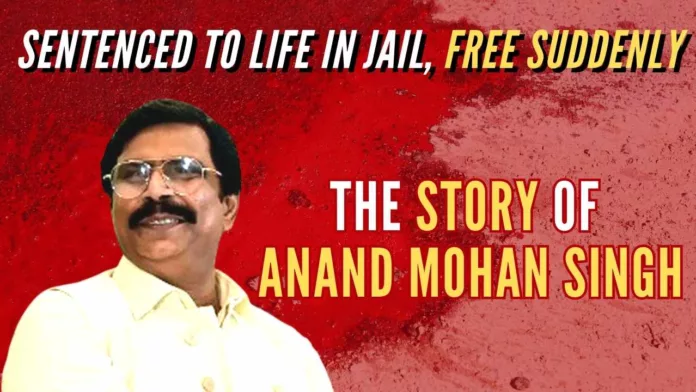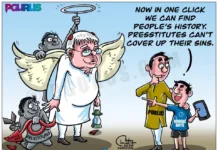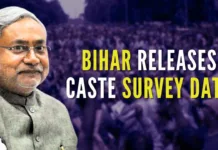
Anand Mohan Singh’s release kicked up a debate on remission rules
In April this year, muscleman-politician Anand Mohan Singh, convicted in a murder case, walked out of prison a free man, without serving the life term that the High Court had ordered and the Supreme Court had upheld. He was a beneficiary of the decision of the Nitish Kumar-led coalition government in Bihar to tweak the state’s prison manual rules.
The change in rules pertained to a clause that dealt with the ‘murder of a public servant on duty’. The government deleted it from the manual. Earlier, any person who was convicted for the killing of a public servant on duty could not seek remission even after completing 14 years behind bars; he would be incarcerated for life.
With Anand Mohan Singh free—after being in jail since 2007—Uma Devi Krishnaiah, the wife of the murdered officer, moved the Supreme Court against the release. She pointed out, among other things, that the rules had been changed with the sole objective to benefit the gangster-turned-politician. She also pointed to the gravity of the crime: that Anand Mohan had been given the death sentence by the trial court, which was later commuted to life term by the Patna High Court. Acting on the slain officer’s wife’s plea, the apex court has issued notices to various parties including the Bihar government and the Centre.
The state government has defended its decision by saying that different rules could not be applicable to different convicts of murder and that those convicted for the murder of a public servant could not be treated differently from those convicted for the murder of non-public servants. However, political speculation is rife that the rules were changed to indeed win the favour of the bahubali (who still commands considerable influence in parts of Bihar, especially his home region of Kosi, with an eye on next year’s Lok Sabha elections.
But why has there been such a furore over the release? After all, gangster-turned-politicians are known to have been freed either on bail or when their sentences are remitted. To understand the anger, one must go back in time to recall Anand Mohan Singh’s exploits, particularly in the case which resulted in his conviction.
In December 1994, G Krishnaiah, the young (he was 35 years of age) District Magistrate of Gopalganj, was returning to his base after attending a meeting in Hajipur in his official vehicle. On the way, the car slowed down as a funeral procession was winding down the road. It was that of a small-time politician and gangster Chhotan Shukla, who had been killed a day before while campaigning in the coming Assembly elections. The needle of suspicion was on a minister in the RJD government (he would later be killed by way of retaliation). Leading the procession was Anand Mohan Singh along with his wife Lovely Anand.
Anand Mohan Singh had those days emerged as a prominent leader of the anti-Mandal group, and he had managed to stitch together a social alliance of the Rajputs and the Bhumihars against the Other Backward Classes (OBCs), who had gained social and political impetus with the implementation of the Mandal Commission — this effectively place him in a confrontation with the likes of Lalu Prasad Yadav, a strong votary, and beneficiary of Mandal politics.
Returning to that fateful day, as Krishnaiah’s vehicle slowed down, the crowd suddenly turned violent and directed its anger at the District Magistrate. The mob dragged Krishnaiah out of the car and brutally assaulted him. It was a senseless act; the District Magistrate had nothing to do with Chhotan’s killing, nor had the crime occurred in his jurisdiction. As the helpless officer lay on the ground, a brother of the slain gangster whipped out a gun and shot Krishnaiah dead. According to reports, he was egged on to commit the crime by Anand Mohan Singh. At the very least, Anand Mohan did nothing to prevent the crime.
It is difficult to understand the bahubali’s animosity towards Krishnaiah. The IAS officer was an upright man who had vowed to combat goondaism, but his jurisdiction did not extend to Anand Mohan Singh’s area of operation. Anand Mohan’s resentment against the OBCs also does not explain his conduct, because Krishnaiah was not from the OBC but from the Scheduled Castes.
Thirteen years after the matter went to a trial court, the judge pronounced Anand Mohan Singh guilty and sentenced him to death. In December 2008, the Patna High Court, hearing a plea, overturned the verdict and instead sentenced him to life imprisonment, which the Supreme Court later upheld. The High Court said that ‘since Anand Mohan Singh is not an assailant, hence ends of justice will be served by converting the death sentence awarded to him to rigorous imprisonment for life.’ Anand Mohan Singh’s wife, whom the trial court had awarded a life term in jail, was acquitted. The bahubali was represented in the apex court by Ram Jethmalani who presented a robust defence of his client but the Justices were not impressed.
Ironically, Anand Mohan Singh’s initiation into violent politics had begun with his fight against what he called ‘politicized criminals’ in Bihar. His battle cry had been, ‘Sandhi nahi ab rann hoga’ — no more compromises, there will now be war. He had hitched his support to Nitish Kumar. Along the way, he gathered several cases against him and even spent time in jail. He came into confrontation with another muscleman, Pappu Yadav, which turned into a classic caste battle that Bihar became notorious for.
On the political front, he was flexible and did whatever was necessary to keep himself relevant. He was with the Janata Dal. Later, he pledged his support to the BJP, when Atal Bihari Vajpayee was the Prime Minister. He even floated an outfit of his own and had no ideological qualms about merging it with the Congress party. Barring Lalu Prasad Yadav’s RJD, he thus did business with most other prominent political parties — now, with his release by the state’s coalition government that comprises the RJD, it can be said that he has made peace with that party as well.
But then political ideology was never Anand Mohan Singh’s strong point. He supported Nitish Kumar but later dubbed his government as that of ‘Chambal Raj’ (dacoity rule). He had backed the BJP but later slammed it for running an ‘obnoxious campaign against a widow’ (Sonia Gandhi).
It now remains to be seen what political role Anand Mohan Singh plays in the coming days. But that depends on what the apex court says on the plea before it against his untimely release.
Note:
1. Text in Blue points to additional data on the topic.
2. The views expressed here are those of the author and do not necessarily represent or reflect the views of PGurus.
PGurus is now on Telegram. Click here to join our channel and stay updated with all the latest news and views
For all the latest updates, download PGurus App.










